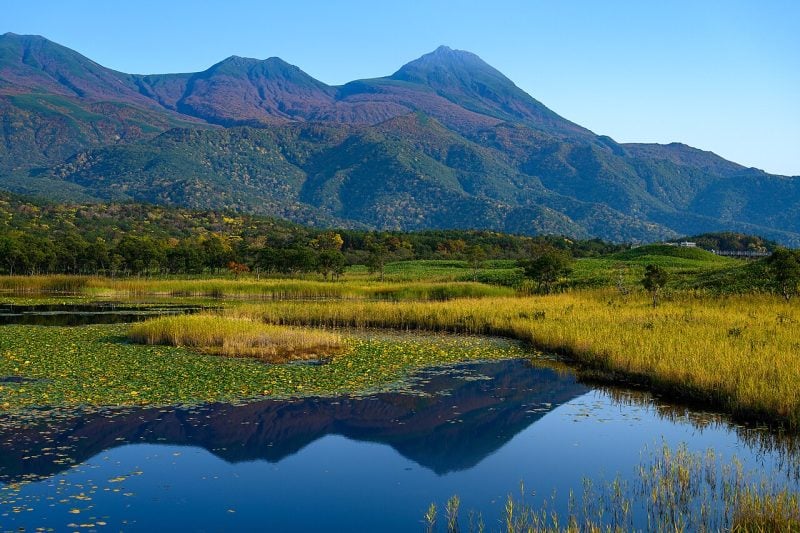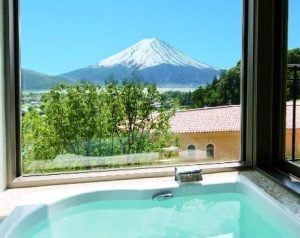Japanese national parks feature a remarkable mix of volcanic peaks, untouched forests, coastal gems, and marine life throughout the country. These protected spaces stretch from Hokkaido’s northern edge to Okinawa’s southern islands. They represent ecosystems that embody Japan’s natural splendor. The archipelago now hosts more than 30 national parks. Each park gives visitors a chance to experience unique landscapes.
These national parks differ from other countries’ park systems because of their special land management approach. The parks combine state-owned, public, and private land – an adaptation that works well with Japan’s limited space. This setup helps preserve both natural wonders and cultural heritage within park boundaries.
The country created its first national parks in 1931. Their main goal was simple: protect scenic natural spots for public enjoyment. This vision still guides Japan’s best national parks today. You can explore UNESCO World Heritage sites in Yoshino-Kumano National Park, where they can take a walk walk along San’inkaigan National Park’s vast sand dunes that run 75 kilometers from Kyoto to Tottori.
Japan might be famous for its busy cities and tech innovations, but its outdoor experiences amaze first-time visitors. The parks balance Japan’s urban energy perfectly. Travelers can hike ancient pilgrimage paths through sacred mountains or relax in hot springs near snowy peaks. Besides, you must visit historic towns like Kinosaki Onsen near San’inkaigan National Park.
Why Japan’s National Parks Are Unlike Any Other
Japanese national parks stand out from others worldwide through their unique blend of cultural heritage and natural landscapes. These parks don’t just focus on wilderness like others do – they celebrate centuries of human connection with nature.
A mix of nature, history, and spirituality
Natural and spiritual worlds merge seamlessly in Japanese national parks. Sacred mountains, ancient shrines, and historical sites coexist with wild landscapes. This reflects Japan’s Shinto and Buddhist traditions that recognize nature’s divine essence.
Yoshino-Kumano National Park showcases this perfectly. Ancient pilgrimage routes called Kumano Kodo snake through mystical forests and sacred waterfalls. Modern hikers walk the same paths that emperors and peasants used for spiritual enlightenment more than a thousand years ago.
Nikko National Park’s Toshogu Shrine complex rests peacefully among towering cedars. This harmony represents the Japanese concept of shin-rin-yoku (forest bathing) – nature immersion that benefits both body and spirit.
Seasonality plays a crucial role in Japanese park management. Each park transforms throughout the year. Spring brings cherry blossoms, summer shows lush greenery, autumn displays vibrant foliage, and winter creates snow-covered wonderlands. Every season offers something unique in these spaces.
How the park system blends public and private land
Japanese national parks’ land management approach makes them truly special. American parks are almost entirely government-owned, but Japanese parks use a mixed system with different types of land ownership.
Japan’s limited landmass and dense population made this approach necessary. The government chooses national park locations based on scenic or ecological value, whatever the ownership status might be.
Fuji-Hakone-Izu National Park demonstrates this approach perfectly. Private hot spring resorts exist next to public conservation areas and sacred sites run by religious institutions. Local communities continue their cultural practices within park boundaries through this flexible system.
Japanese parks prioritize landscape preservation over strict conservation. Traditional activities thrive within park boundaries. Visitors might spot working farms, traditional villages, or small industries next to protected wilderness areas.
These national parks give visitors more than just nature experiences. They provide authentic glimpses into rural Japanese life and age-old traditions that still flourish naturally in these protected spaces.
1. Shiretoko National Park, Hokkaido

Shiretoko National Park sits at the northeastern tip of Hokkaido. This pristine wilderness area stands out among all national parks in Japan. The name “Shiretoko” comes from the Ainu word “sir etok,” which means “the end of the earth” or “the place where the earth protrudes” – a perfect description of this remote peninsula that stretches into the Sea of Okhotsk.
The park earned its national park status in 1964 and became a UNESCO World Heritage Site in 2005. Nature lovers will find an extraordinary connection between marine and terrestrial ecosystems here. The park’s most remarkable feature is its position as the Northern Hemisphere’s southernmost point where sea ice forms seasonally. This natural phenomenon creates an incredibly productive ecosystem that builds a rich food chain from sea to land.
Brown bears thrive here in one of the world’s highest densities, making Shiretoko a dream destination for wildlife watchers. These magnificent creatures find varied food sources throughout the year in different habitats – from coastlines to alpine zones. Visitors can watch bears safely from boat cruises along the coastline.
The park’s wildlife goes well beyond bears. This protected area gives shelter to endangered Blakiston’s fish owls, Steller’s sea eagles, white-tailed eagles, and several whale species including orcas, sperm whales, and minke whales. The park’s network of 90 rivers connects mountains to sea, creating vital habitat for spawning salmonid species that strengthen the bond between marine and terrestrial ecosystems.
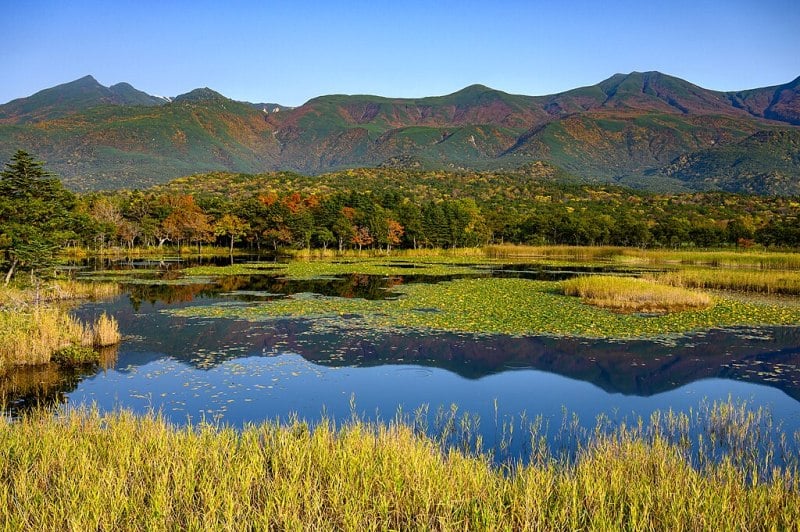
The landscape takes your breath away with the Shiretoko mountain range and its active volcanoes like Mount Rausu and Mount Io. Hiking enthusiasts can choose from various trails – from easy 500-meter walks to challenging 5-kilometer treks through untouched forests. Shiretoko Crossing Road rewards travelers with amazing views from Shiretoko Pass, 738 meters above sea level.
The park’s information centers help visitors plan their adventures with guidance on trails, wildlife viewing spots, and safety tips. They also provide equipment rentals and educational exhibits about the park’s unique ecosystem.
Shiretoko National Park represents everything in Japanese national parks. It preserves more than just wilderness – it protects a complete ecological system where sea, rivers, and forests work together to support remarkable biodiversity.
2. Yakushima National Park, Kagoshima

Yakushima National Park sits off Kyushu’s southern coast. This mystical island combines ancient cedar forests with pristine beaches to create one of Japan’s most unique ecosystems. The island earned its UNESCO World Heritage Site status in 1993.
The park stands out from other Japanese national parks because of its incredible rainfall. The annual rainfall tops 8,000 mm, which creates an always-wet environment where emerald moss covers rocks and tree trunks. Local people joke that it rains “35 days a month” – evidence of the island’s famously wet climate.
The Jomon Sugi is without doubt the park’s greatest treasure. This ancient cedar is between 2,170 and 7,200 years old. It reaches 25.3 meters high with a trunk measuring 16.4 meters around, dating back to Japan’s Jomon period. People found this tree in 1968, and it ended up leading to the island getting protected status.
The hike to Jomon Sugi takes real commitment – you’ll need 10 hours round-trip from the Arakawa Trailhead. Your trip follows old logging railway tracks and takes you through abandoned settlements. You’ll pass other impressive trees like the Daiosugi and Wilson’s Stump – the hollow remains of a giant cedar cut down 300 years ago.
The island’s compressed biodiversity makes it special. Plants change as you climb, starting with subtropical coastal vegetation and moving through temperate rainforest to cold-temperate bamboo grassland at the peaks. This rich environment supports about 1,900 plant species, 16 types of mammals, and 150 bird species.
Yakusugi Land gives easier options to see thousand-year-old cedars. You can walk on boardwalks and well-laid-out paths. The moss-covered forests of Shiratani Unsuikyo ravine are famous as the inspiration for Studio Ghibli’s “Princess Mononoke”.
The national park covers 10,747 hectares – about 21% of the island. It’s protected in several ways, as a Wilderness Area, National Park, Special Natural Monument, and Forest Ecosystem Reserve. This layered protection helps manage both conservation needs and visitor experiences.
The park offers more than just forests. Nagata Inakahama Beach on the island’s north side is world-famous. Sea turtles come here to spawn, adding another amazing feature to this remarkable national park.
3. Fuji-Hakone-Izu National Park, Kanto
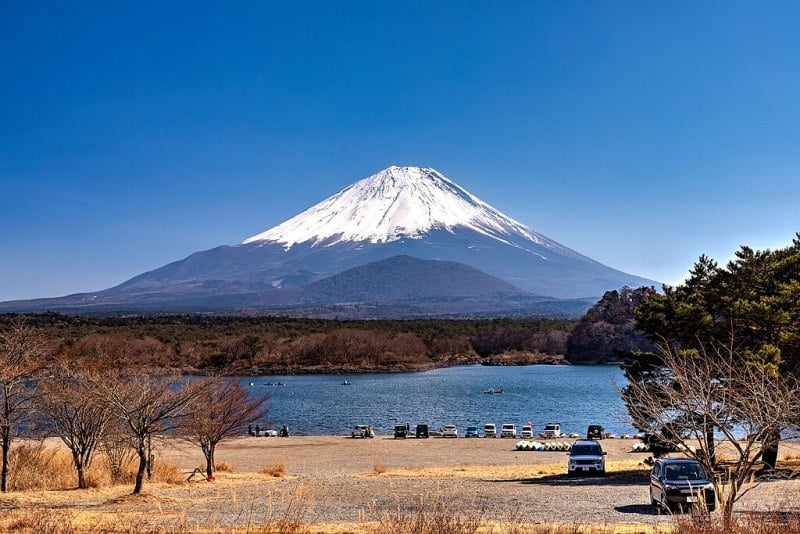
Fuji-Hakone-Izu National Park stands proudly in central Japan, showcasing natural wonders with Japan’s most recognizable symbol—Mount Fuji at its center. The park is 87 years old, making it one of the first four national parks in Japan. This remarkable protected area covers 1,227 square kilometers across several prefectures.
Japan’s tallest mountain, Mount Fuji, towers at 3,776 meters. UNESCO granted this perfectly symmetrical active volcano World Heritage status in 2013. The mountain’s lower slopes are rich with dense woodland that changes to coniferous forest up to the Sixth Station. The peak turns into a volcanic desert.
The official climbing season starts in July and runs through September. Hikers can choose from four main trails to reach the summit, and most start their trip at the Fifth Station. Mountain huts dot these routes, letting climbers rest or stay overnight to catch the stunning sunrise from the peak.
The park’s unique landscape comes from volcanic forces. Lava flows created the Fuji Five Lakes (Fuji Goko), where Lake Yamanaka and Lake Kawaguchi are the largest. The ancient Aokigahara Jukai Forest grows from rich volcanic soil on Mount Fuji’s northwest slopes. This forest offers great spots to trek and practice forest bathing (shinrin-yoku)—a proven therapy that uses peaceful walks among trees.
Lake Ashinoko sits in the Hakone region, formed about 3,000 years ago when part of Mount Kamiyama collapsed. Nearby, Owakudani or “great boiling valley” shows off its fumaroles and hot springs—signs that volcanic activity continues. Hakone has drawn visitors to its many hot spring resorts for hundreds of years.
The Izu Peninsula stretches to the south with dramatic coastlines shaped over millions of years by tectonic activity. Visitors can explore stunning geological features like the rugged Jogasaki Coast and Cape Irozaki. The Izu Islands chain extends 290 kilometers into the Pacific Ocean. These islands are home to unique plant and animal species that you won’t find anywhere else, such as the Izu thrush and Iijima’s leaf warbler.
This national park of Japan stands out because it’s just 90 minutes from Tokyo. The park covers almost every type of Japanese landscape you can imagine, from sacred mountains to underwater coral reefs, all in one amazing protected area.
4. Iriomote-Ishigaki National Park, Okinawa
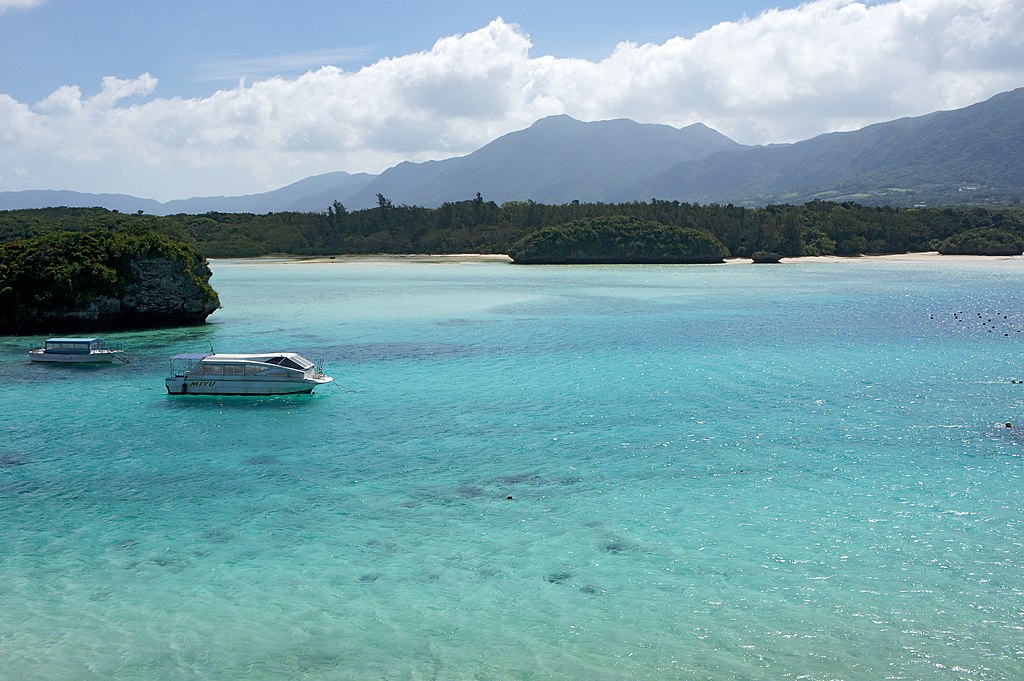
Iriomote-Ishigaki, Japan’s southernmost national park, showcases some of the most diverse ecosystems in the country. This stunning reserve, 50 years old, spans Iriomote and Ishigaki islands along with their surrounding coral-reef seas. The park covers 122,150 hectares, with marine environments making up 81,497 hectares.
The park’s underwater world holds remarkable treasures. The Northern Hemisphere’s largest blue coral community thrives here. These formations are so vital that the International Union for Conservation of Nature suggested making them a World Heritage site. Visitors can see these amazing underwater landscapes from glass-bottom boats, watching reef manta rays and endangered sea turtles swim by.
The critically endangered Iriomote wildcat (Prionaliurus bengalensis iriomotensis), first found in 1965, lives nowhere else on Earth. Only about 100 of these cats remain. These clever predators eat almost anything – from crabs and frogs to snakes and birds—showing how well they’ve adapted to island life.
Japan’s largest mangrove forest grows along the brackish waters where rivers meet the coast. Visitors can explore these ecosystems by taking sightseeing boats or canoes down the Nakama River. The nearby Nagura Amparu wetlands stretch across 160 hectares and welcome countless migratory birds.
Waterfalls add to the park’s beauty. Pinaisara Falls drops 55 meters, making it Okinawa Prefecture’s tallest waterfall. Visitors can reach Mariyudu Falls by going upstream along the Urauchi River through subtropical forest.
A one-hour climb up Mt. Omoto, Ishigaki Island’s highest point, rewards hikers with sweeping views of surrounding coral reefs. Yonehara hosts the rare Yaeyama palm tree (Satakentia liukiuensis), which grows only on these islands.
The park’s cultural heritage shines through its islands. Taketomi Island shows off traditional Okinawan architecture with stone walls and red-tiled roofs. Hateruma-jima, Japan’s southernmost inhabited island, blends traditional houses with sugar cane fields and beautiful beaches.
Iriomote-Ishigaki National Park shows Japan’s dedication to protecting not just wilderness, but the complete ecological connections between mountains, rivers, and seas.
5. Nikkō National Park, Tochigi
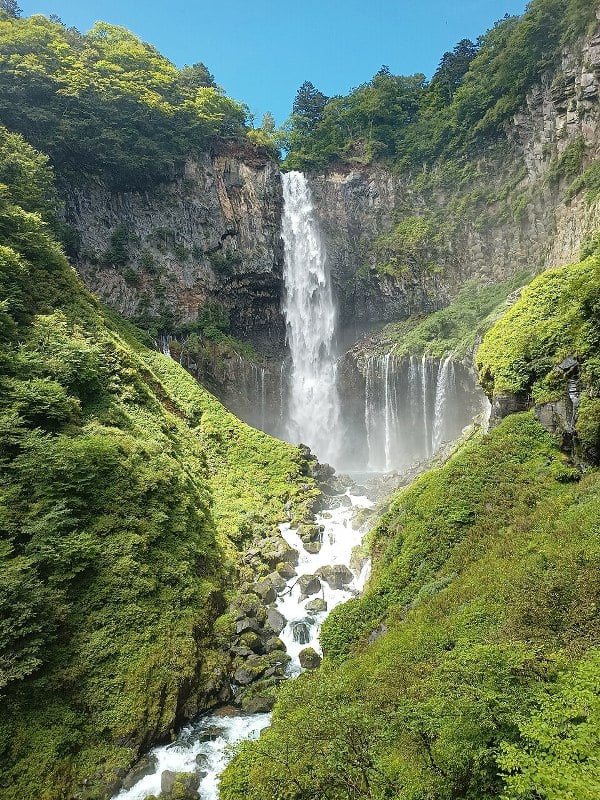
Nikkō National Park in Tochigi Prefecture gives visitors a unique blend of spiritual heritage and natural beauty that showcases the best of japanese national parks. This sacred place has been a hub of Shinto and Buddhist mountain worship for hundreds of years. Nature and human history come together here in remarkable ways.
The magnificent Toshogu Shrine sits at the park’s cultural center. This is where Tokugawa Ieyasu, the first Tokugawa shogun, found his final resting place after his death in 1616. His grandson later built an impressive complex with 55 buildings, and eight of them are National Treasures.
The famous Yomeimon gate catches everyone’s attention with its detailed wood carvings, colorful paintings, and gold leaf decorations. Visitors love the playful carvings, especially the sleeping cat and the famous three monkeys showing their “see no evil, hear no evil, speak no evil” poses.

Lake Chuzenji came into existence about 20,000 years ago when Mount Nantai erupted. The lake sits 1,269 meters above sea level, making it Japan’s highest natural lake. A beautiful 25-kilometer hiking trail goes all around it, with amazing views in every season.
The lake’s cool weather drew foreign embassies to build summer houses along its shores during the 19th and 20th centuries. These buildings now tell fascinating architectural stories.
Kegon Falls stands out as one of Japan’s three most beautiful waterfalls. The water drops 97 meters from Lake Chuzenji, creating different scenes throughout the year. Spring brings lush greenery, summer welcomes migratory Asian house martins, and winter transforms the falls into solid ice. The falls look spectacular from the free upper deck, while a paid lower observatory platform lets you get closer to the action.
The charming Ryuzu Waterfall got its name (“dragon head waterfall”) because it looks like a dragon’s head. This spot becomes one of Nikko’s most beautiful places during autumn, usually reaching its peak colors in early October.
The Nikko Natural Science Museum near the Chuzenji Onsen bus terminal helps visitors learn about the park’s history and ecosystems through helpful multilingual displays.
6. Keramashoto National Park, Okinawa

Keramashoto National Park lies between the crystal waters of Japan’s southern archipelago. This marine paradise showcases azure seas and vibrant coral reefs that create an underwater wonderland. Japan designated it as its 31st national park on March 5, 2014 (coinciding with Coral Day). This oceanic treasure sits approximately 40 kilometers west of Naha City in Okinawa Prefecture.
More than 30 islets and rock reefs make up the park, spanning 3,520 hectares of land and 90,475 hectares of ocean. The park’s extraordinary water clarity, known locally as “Kerama Blue,” has earned its name from the islands themselves.
Keramashoto’s underwater world reveals exceptional biodiversity. The surrounding seas host 248 species of reef-building corals, which represent about 62% of Japan’s total reef-building coral species. These coral formations create breathtaking seascapes and provide an essential larval supply source for Okinawa’s main island.
Protected waters attract various marine species year-round. Green turtles, hawksbill turtles, and loggerhead turtles make their nests on sandy beaches during summer. Humpback whales migrate to Keramashoto’s waters from December through April to breed and raise their young. These magnificent creatures, measuring 15 meters long and weighing around 30 tons, create spectacular displays as they breach and slap their tails.
The islands showcase subtropical vegetation with over 620 native plant species. The Kerama Sika deer, a national natural treasure, inhabits Yakabi-jima and Geruma-jima islands. This smaller version of the Kyushu deer stands out among the local wildlife.
Traditional festivals honor sea gods around August in the lunar calendar, highlighting the park’s rich cultural heritage. Geruma-jima Island’s Takara Residence, built by a 19th-century boatman who sailed to China, stands as a National Important Cultural Property. This historic structure reflects the islands’ significance as a waypoint in China-Ryukyu trade.
7. Daisen-Oki National Park, Chugoku
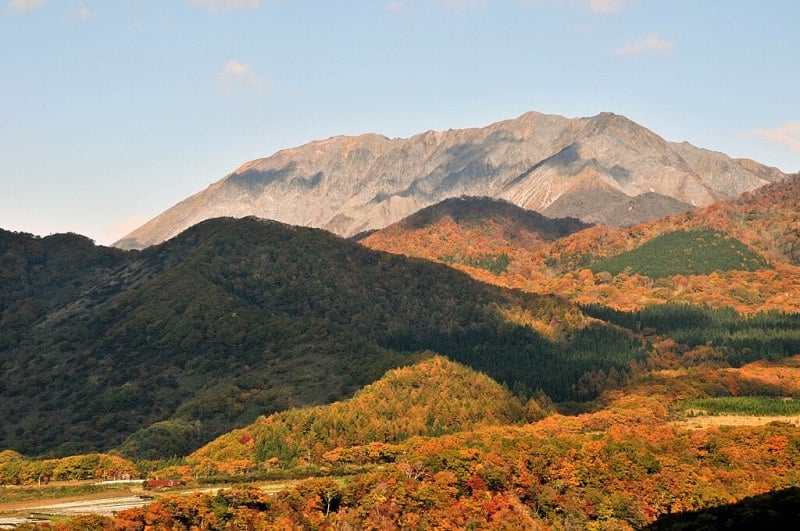
Daisen-Oki National Park stretches across three prefectures in western Japan. This remarkable wilderness combines sacred mountains, ancient forests, and remote islands. The park started its journey in 1936 and grew in 1961 to welcome the Oki Islands, creating a space that lets visitors explore everything from spiritual pilgrimages to geological wonders.
Mount Daisen towers as the park’s centerpiece, reaching 1,729 meters as the Chugoku region’s highest peak. This sleeping volcano has drawn worshipers for centuries along trails that served as pilgrim paths. While Mount Fuji might be Japan’s most famous peak, Mount Daisen’s unique shape draws similar comparisons, yet its trails remain pleasantly relaxed.
Daisenji Temple, an 8th-century Buddhist complex, serves as Mount Daisen’s spiritual heart. Visitors and pilgrims start their experience here before climbing through western Japan’s largest beech forest. The climb to Misen Peak (1,709 meters) rewards hikers with breathtaking views of the Sea of Japan and Shimane Peninsula on clear days.
The Oki Islands archipelago spreads out with more than 180 islands, showcasing dramatic geological features that earned UNESCO Global Geopark status in 2013. These islands boast Japan’s most impressive coastal cliffs, including the towering 257-meter Matengai Cliff.
The park shows a different face each season. Skiers flock here from late November through April, while autumn visitors come to see maple and beech forests burst into brilliant colors around late October. Summer beckons adventurers to ride electric mountain bikes or paddle through island sea caves.
Nature lovers will find great resources at several information centers. The Daisen National Park Center and Oki Natural Museum are great ways to get knowledge about local wildlife and plants. The Hiruzen highlands create perfect conditions to camp and ride horses, thanks to gentle slopes and cool summer weather.
This park stands as proof of Japan’s success in protecting both its natural beauty and cultural heritage in one special place.
8. Kirishima-Kinkowan National Park, Kyushu
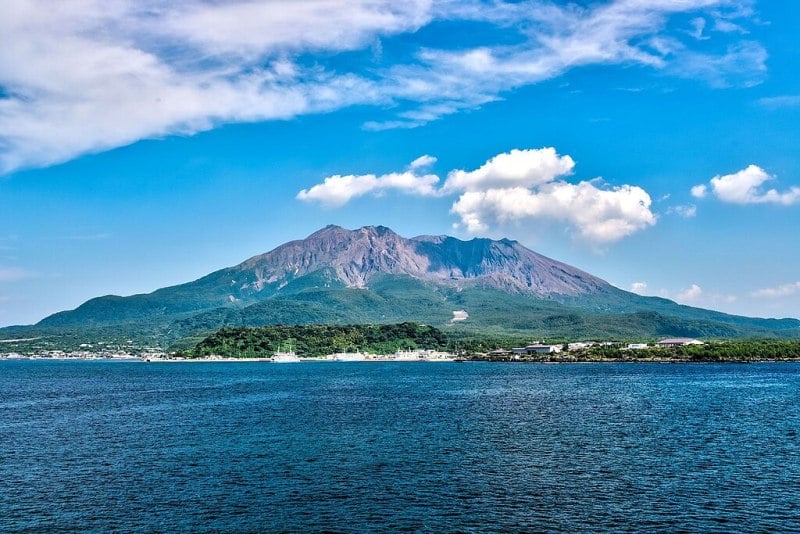
Southern Kyushu’s Kirishima-Kinkō-wan National Park features more than 20 volcanoes that create an otherworldly landscape of valleys, waterfalls, caldera lakes, and rugged capes. Visitors get a front-row view of Japan’s fiery underbelly in this geological wonderland.
Mount Sakurajima stands as the park’s centerpiece, just four kilometers from Kagoshima City. This smoking giant reaches 1,117 meters above sea level and sends ash clouds thousands of meters into the sky. The spectacular display attracts visitors from all over the world.
The Kirishima Mountains attract passionate hikers to Mt. Karakuni-dake, the highest peak at 1,700 meters. Clear days reward climbers with stunning views of Kinkowan Bay, Mt. Sakurajima, and sometimes Mt. Kaimon in the distance. Mt. Takachiho-no-mine nearby holds deep cultural meaning – legend says Ninigi no Mikoto, the sun goddess Amaterasu’s grandson, came down to earth at this spot.
Ebino Kogen makes a perfect base camp for park exploration. Trails range from short forest walks to day-long mountain hikes. Some areas near Mt. Shinmoe-dake might close temporarily because of volcanic activity.
Kirishima Onsen Village welcomes tired adventurers with nine different hot springs, each with special healing properties. Steam rises gently from the mountainside, adding magic to this geothermal paradise.
The park’s information centers provide essential guidance about trail conditions, safety alerts, and weather updates. The core team also shares detailed information about local ecology.
Geothermal enthusiasts can take guided tours of Lake Unagi’s steam vents. Another option is Kurino-Hachiman Jigoku, where hot gasses burst from “hell” springs at Mt. Kurino’s base.
9. Yoshino-Kumano National Park, Kansai

Yoshino-Kumano National Park sits deep in the Kii Peninsula. This sanctuary has blended ancient spirituality with natural beauty for thousands of years. The park stands out among national parks in Japan because it perfectly combines cultural heritage with untouched wilderness.
Mount Yoshino draws visitors with its amazing collection of cherry trees. More than 30,000 blossoms cover the mountainside, and some trees are 1,300 years old. The mountain’s shape creates four distinct viewing areas: Shimo Senbon at the base, Naka Senbon in the middle, Kami Senbon at the top, and Oku Senbon in the innermost part. These zones bloom at different times, which makes the viewing season last throughout spring.
The park’s crown jewel is the Kumano Kodo—ancient pilgrimage routes that became a UNESCO World Heritage site in 2004. Emperors and common folk have walked these sacred paths for over a thousand years. The network links three grand shrines known as Kumano Sanzan: Kumano Hongu Taisha, Kumano Hayatama Taisha, and Kumano Nachi Taisha.
Sacred landmarks dot the entire area. Visitors can find Kinpusenji Temple and Yoshimizu Shrine in the Naka section. The quieter Kami section features Hanayagura Observation Point, which takes an hour to reach by hiking from the upper ropeway station.
Today’s travelers can get help from several visitor centers. The Ugui Visitor Center, Odaigahara Visitor Center, Shiokaze-no-Kyukeisho, and Nanki Kumano Geopark Center provide safety tips, weather updates, tour details, and educational displays about local wildlife.
The hiking experience helps visitors understand this japanese national park better. Traditional purification rituals are part of walking these ancient routes. The experience becomes as meaningful as reaching the destinations. Modern hikers pass through scenic farming villages with traditional minka homes. Rolling hills filled with orchards, herb gardens, and tea plantations surround these paths.
10. Setonaikai National Park, Seto Inland Sea
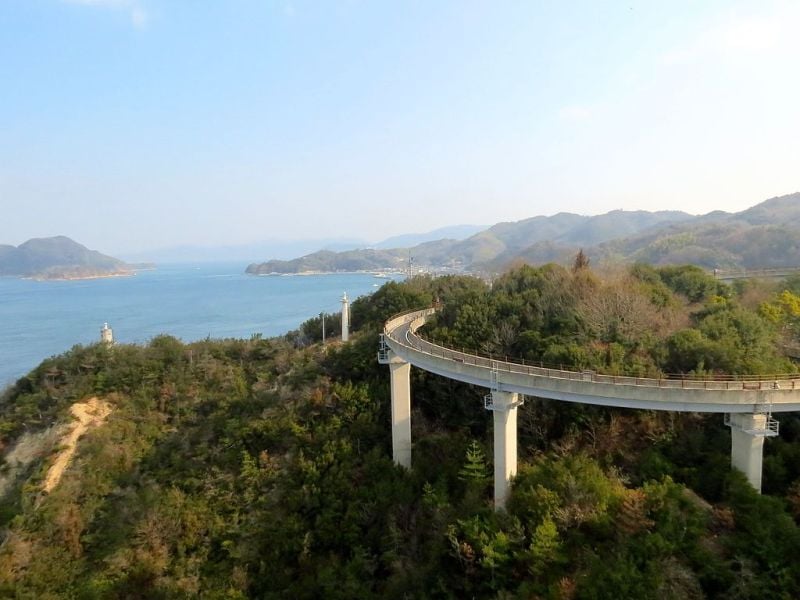
Setonaikai National Park covers 9,000 square kilometers of land and sea. The park stands as the crown jewel among Japan’s national parks and spans coastal and island areas from 11 prefectures. This 89-year-old park ranks among the three oldest national parks in Japan.
The park’s landscapes create stunning contrasts. Gnarled rocks surround Mount Rokko while tree-covered islets connect through engineering marvels. Historic fishing villages nestle in peaceful bays next to white-sand beaches with pine trees. Each mile reveals a new visual symphony of these diverse elements.
The Seto Inland Sea creates the park’s heart with more than 700 islands in waters so calm they look like a big lake. This sea’s history shows its importance as a trade route, and it remains a busy shipping lane today.
The Shimanami Kaido offers cyclists a unique experience on its 70-kilometer road. This path links Onomichi City in Hiroshima Prefecture to Imabari City in Ehime Prefecture through nine impressive bridges. Cyclists find ten bike rental terminals along the way, making it easy to rent and return bikes at different spots. The route features model courses that suit riders of all skill levels.
Nature lovers will find plenty of wildlife and outdoor activities in this resource-rich region. Visitors can hike through lush forests, kayak near protected shores, or swim in crystal-clear waters—all in one park.
The region’s long bridges gracefully connect islands throughout the Seto Inland Sea. These bridges form three major routes between Honshu and Shikoku. Travelers can experience the area’s gentle rhythms by boat, car, or bicycle while exploring this connected network.
11. Daisetsuzan National Park, Hokkaido

Daisetsuzan National Park sits majestically in Hokkaido’s central highlands. Its name means “great snowy mountains” which perfectly captures its grandeur. This 90-year-old wilderness covers 226,764 hectares and remained Japan’s largest protected area until Hidakasanmyaku-Erimo-Tokachi National Park came along in 2024.
The Ainu people called this land “Kamui Mintara” or “the playground of the gods”. The park’s heart features the Daisetsuzan volcanic group around the Ohachidaira caldera. Mount Asahidake stands as Hokkaido’s highest peak at 2,291 meters. This mountain gives visitors amazing experiences in every season. Summer brings rare alpine plants and wildlife. Autumn paints the landscape with vibrant colors. Winter creates magical scenes with powder snow, ‘diamond dust’ and ‘ice fog’.

The park’s ecological features make it special. The mountains average around 2,000 meters, but their northern location creates an alpine environment similar to 3000-meter peaks in other parts of Japan. This unique climate nurtures about 250 alpine plant species. Some plants grow only here, like Oxytropis japonica var. sericea and Lagotis yesoensis.
Wildlife flourishes in abundance. Brown bears, Yezo stoats, and Japanese pikas make their home here. The Daisetsuzan range hosts rare alpine butterflies such as the usubakicho and Freija’s fritillary.
The Asahidake Ropeway makes exploration easy. It takes visitors from Sanroku Base Station (1,100m) to Sugatami Summit Station (1,600m). Hiking trails of different levels lead to fumaroles, beautiful ponds, and the peak. After a day’s adventure, visitors can relax in several hot springs. Asahidake Onsen, Sounkyo Onsen, and other spots provide perfect relaxation.
This national park shows what makes Japanese national parks special – pure wilderness that blends accessibility with cultural importance.
12. Towada Hachimantai National Park, Tohoku
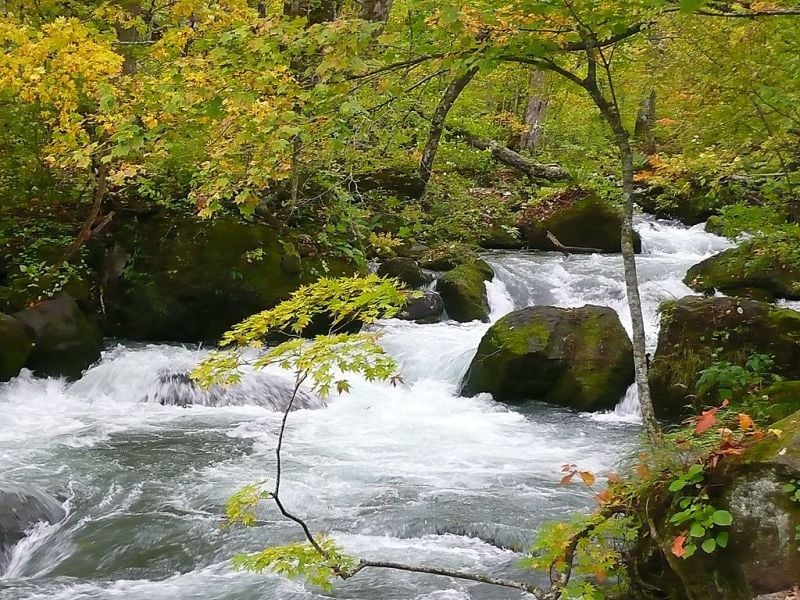
Volcanic activity and flowing waters shaped Towada Hachimantai National Park, which spreads through Aomori, Akita, and Iwate prefectures in northern Japan. This 87-year-old protected area covers 855.34 square kilometers and features two distinct zones about 50 kilometers apart.
Lake Towada dominates the northern Towada-Hakkoda area. This stunning caldera lake emerged 200,000 years ago from intense volcanic activity. The lake’s calm waters mirror the surrounding greenery and have earned it recognition as Japan’s Special Place of Scenic Beauty and a Natural Monument. The crystal-clear Oirase Stream flows from the lake and creates a beautiful river valley that runs 14 kilometers from Nenokuchi to Yakeyama hot spring village.
Nature lovers enjoy the Oirase Stream trail that winds through natural woods next to the water. The path takes about 2.5-3 hours one way and reveals more than a dozen waterfalls among moss-covered rocks and towering trees. The area becomes one of Japan’s most popular fall foliage spots from late October through early November.

Mount Hachimantai anchors the southern area at 1,613 meters. Its plateau features highland marshes and water-filled volcanic craters. Circular craters near Komonomore and Mokkodake give hikers amazing panoramic views. The Hachimantai Aspite Line reopens each mid-April, creating impressive snow corridors where visitors pass between massive snow walls.
The national park of Japan welcomes explorers with walking trails, ropeway access, sightseeing boats, and rental bikes. Local hot springs provide perfect spots to relax and have preserved their charm as historic therapeutic bathing centers. With 1.65 million visitors yearly, Towada Hachimantai ranks among the best national parks Japan has to showcase its volcanic landscapes and peaceful forests.
13. Chubu Sangaku National Park, Chubu
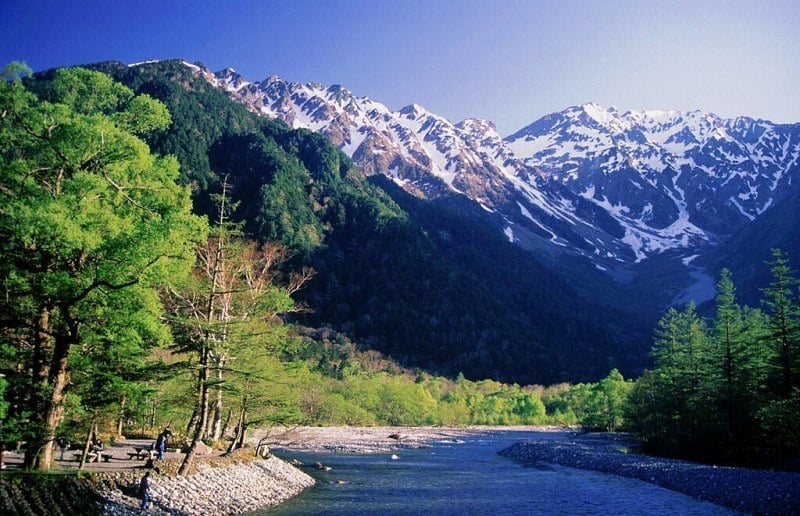
The Northern Alps of Japan come alive at Chubu Sangaku National Park. This 1934-old park surrounds the Hida Mountain Range and showcases some of Japan’s most stunning mountain views. The park features 10 peaks that reach beyond 3,000 meters, which makes up almost half of Japan’s 21 mountains of this height.
The park’s crown jewel, Kamikochi, rewards visitors with stunning views along the crystal-clear Azusa River. This gateway to the Northern Japanese Alps nestles in a deep valley where you’ll spot monkeys, various birds, and sometimes even bears in their natural habitat. The area sparked novelist Ryunosuke Akutagawa’s imagination, who wrote about mythical water beings called “kappa.” The famous Kappabashi Bridge got its name from these legendary creatures.
The park’s scenery changes with each season. Cherry blossoms and alpine flowers paint the landscape from May to July. Mid-October brings a burst of autumn colors, and the Hakuba region turns into a winter sports paradise. Visitors can try stream-climbing, walk through snow corridors, or explore frozen waterfalls.
The park’s story wouldn’t be complete without Walter Weston. This English missionary landed in Japan in 1888 and helped make the area famous. You’ll find his monument in Kamikochi. His impact runs so deep that many people call Chubu Sangaku the birthplace of the Japanese Alps.
Nature and information centers dot the park today. They help visitors with safety tips, weather updates, trail maps, and teach them about local wildlife. These centers serve as starting points for trails that welcome both newbie hikers and seasoned climbers.
Of course, this ranks among the best national parks Japan has to offer. The park strikes a perfect balance between conservation and access. Ropeways, cable cars, and electric busses let people enjoy its soaring peaks and untouched valleys while protecting nature.
FAQs
Q1. How many national parks are there in Japan? Japan has over 30 national parks scattered throughout the archipelago, each offering unique landscapes and experiences.
Q2. What makes Japanese national parks unique? Japanese national parks are distinctive for their blend of natural beauty, cultural heritage, and spiritual significance. They often incorporate public and private lands, allowing for the preservation of both wilderness and traditional communities.
Q3. Which national park in Japan is home to Mount Fuji? Mount Fuji is located within Fuji-Hakone-Izu National Park, which also includes the Fuji Five Lakes, Hakone region, and Izu Peninsula.
Q4. What wildlife can visitors expect to see in Japanese national parks? Depending on the park, visitors might encounter diverse wildlife such as brown bears in Shiretoko, the Iriomote wildcat in Iriomote-Ishigaki, or various bird species and marine life in coastal parks.
Q5. Are there opportunities for outdoor activities in Japan’s national parks? Yes, Japanese national parks offer a wide range of outdoor activities including hiking, skiing, hot spring bathing, wildlife watching, and cycling. Many parks also have well-developed infrastructure to support these activities.
